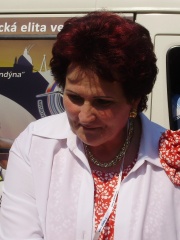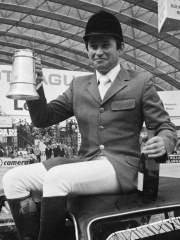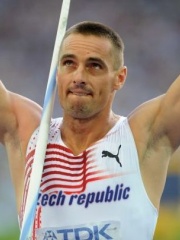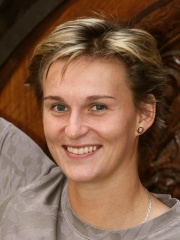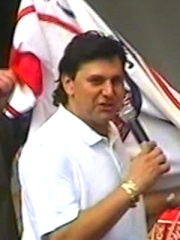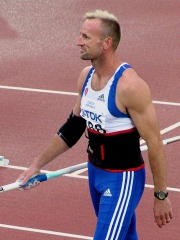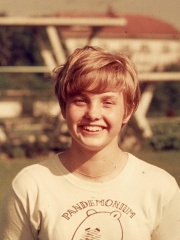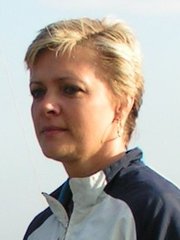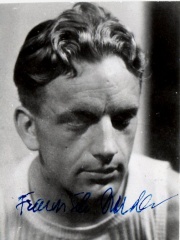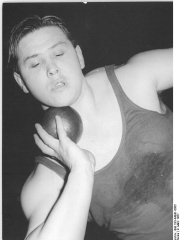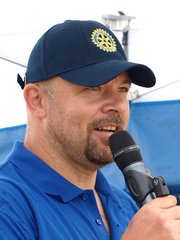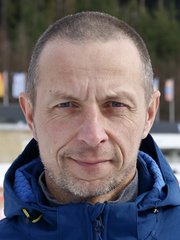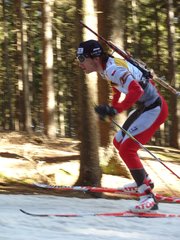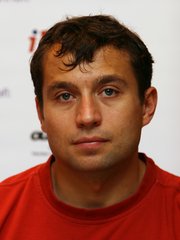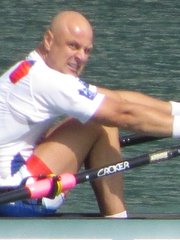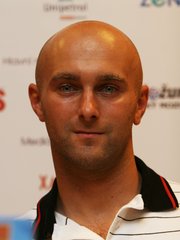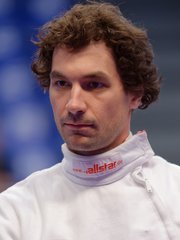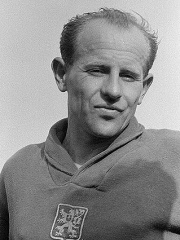
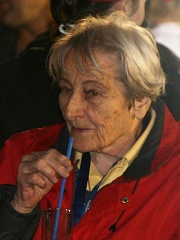
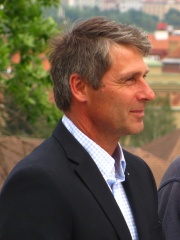
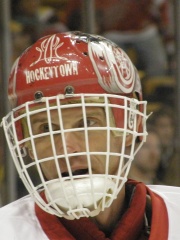
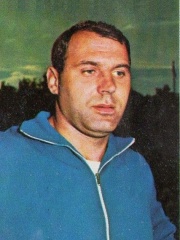
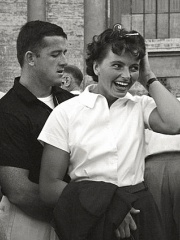
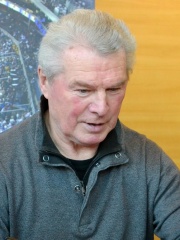
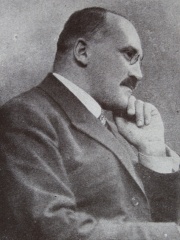
The Most Famous
ATHLETES from Czechia
This page contains a list of the greatest Czech Athletes. The pantheon dataset contains 6,025 Athletes, 181 of which were born in Czechia. This makes Czechia the birth place of the 21st most number of Athletes behind Romania, and New Zealand.
Top 10
The following people are considered by Pantheon to be the top 10 most legendary Czech Athletes of all time. This list of famous Czech Athletes is sorted by HPI (Historical Popularity Index), a metric that aggregates information on a biography's online popularity. Visit the rankings page to view the entire list of Czech Athletes.

1. Emil Zátopek (1922 - 2000)
With an HPI of 75.90, Emil Zátopek is the most famous Czech Athlete. His biography has been translated into 55 different languages on wikipedia.
Emil Zátopek (Czech pronunciation: [ˈɛmɪl ˈzaːtopɛk] ; 19 September 1922 – 21 November 2000) was a Czech long-distance runner best known for winning three gold medals at the 1952 Summer Olympics in Helsinki. He won gold in the 5,000 metres and 10,000 metres runs, but his final medal came when he decided at the last minute to compete in the first marathon of his life. He was nicknamed the "Czech Locomotive". In 1954, Zátopek was the first runner to break the 29-minute barrier in the 10,000 metres. Three years earlier in 1951, he had broken the hour for running 20 km. He was considered one of the greatest runners of the 20th century and was also known for his brutally tough training methods. He popularised interval training after World War II. In February 2013, the editors at Runner's World selected him as the Greatest Runner of All Time. He is the only person to win the 5,000 metres (24 July 1952), 10,000 metres (20 July 1952) and Marathon (27 July 1952), in the same Olympic Games.

2. Dana Zátopková (1922 - 2020)
With an HPI of 65.61, Dana Zátopková is the 2nd most famous Czech Athlete. Her biography has been translated into 37 different languages.
Dana Zátopková (Czech pronunciation: [ˈdana ˈzaːtopkovaː]; née Ingrová [ˈɪŋɡrovaː], 19 September 1922 – 13 March 2020) was a Czech javelin thrower who won a gold medal at the 1952 Summer Olympics.

3. Jan Železný (b. 1966)
With an HPI of 61.92, Jan Železný is the 3rd most famous Czech Athlete. His biography has been translated into 50 different languages.
Jan Železný (Czech pronunciation: [jan ˈʒɛlɛzniː] ; born 16 June 1966) is a Czech former track and field athlete who competed in the javelin throw. He is a World and Olympic champion and holds the world record with a throw of 98.48 metres (323 ft 1 in). Widely considered the greatest javelin thrower of the modern era, he also has the fourth, fifth and sixth best performances of all time. He broke the world record a total of four times.

4. Dominik Hašek (b. 1965)
With an HPI of 61.02, Dominik Hašek is the 4th most famous Czech Athlete. His biography has been translated into 35 different languages.
Dominik Hašek (Czech: [ˈdomɪnɪk ˈɦaʃɛk], ; born 29 January 1965) is a Czech former ice hockey player who was a goaltender for 16 seasons in the National Hockey League (NHL), mostly for the Buffalo Sabres. Widely regarded as one of the best goaltenders in history, Hašek also played for the Chicago Blackhawks, Detroit Red Wings, and Ottawa Senators in his NHL career before finishing his career in Europe. While in Buffalo, he became one of the league's finest goaltenders, earning him the nickname "The Dominator". His strong play has been credited with establishing European goaltenders in a league previously dominated by North Americans. He is a two-time Stanley Cup champion as a member of the Red Wings, winning his first one as the starting goaltender and his second one as the backup. Hašek was one of the league's most successful goaltenders of the 1990s and early 2000s. From 1993 to 2001, he won six Vezina Trophies, the most under the award's current system of voting for the best individual goaltender. In 1998 he won his second consecutive Hart Memorial Trophy, becoming the first goaltender to win the award multiple times. During the 1998 Winter Olympics in Nagano, Japan, he led the Czech national ice hockey team to its first and only Olympic gold medal. The feat made him a popular figure in his home country and prompted hockey legend Wayne Gretzky to call him "the best player in the game". While with the Red Wings in 2002, Hašek became the first European-trained starting goaltender to win the Stanley Cup. In the process, he set a record for shutouts in a postseason year. Hašek was considered an unorthodox goaltender, with a distinct style that led to him being labeled as a "flopper". He was best known for his concentration, foot speed, flexibility, and unconventional saves, such as covering the puck with his blocker rather than his trapper. Hašek holds the record for highest NHL career save percentage (0.9223) and is seventh (first in the modern era) in goals against average (2.202). He also has the third-highest NHL single-season save percentage (0.9366 in 1998–99), behind Tim Thomas in 2010–11 and Brian Elliott's 0.940 in 2011–12. Hašek is the only goalie to face the most shots per 60 minutes and have the highest save percentage in the same season, which he achieved twice (1996 and 1998) playing for the Sabres. At the time of his retirement, he was the oldest active goaltender in the NHL at 43, and the second-oldest active player in the league after Red Wings teammate Chris Chelios, who was 46. Hašek announced his retirement on 9 June 2008, but on 21 April 2009, he announced a comeback to professional hockey and signed a contract with HC Pardubice of the Czech Extraliga. On 7 June 2010, he signed with Spartak Moscow of the KHL and played the last season of his career with this team. Hašek announced his second retirement on 9 October 2012. Hašek was inducted into the Hockey Hall of Fame on 17 November 2014. He is also a member of the Czech Ice Hockey Hall of Fame and the IIHF Hall of Fame. His number was retired by the Buffalo Sabres (2015) and HC Pardubice (2013). In 2017, he was named one of the '100 Greatest NHL Players' in history.

5. František Čapek (1914 - 2008)
With an HPI of 59.13, František Čapek is the 5th most famous Czech Athlete. His biography has been translated into 19 different languages.
František Čapek (24 October 1914 – 31 January 2008) was a Czech sprint canoeist who competed for Czechoslovakia from the late 1940s to the mid-1950s. He won a gold medal in the C-1 10000 m event at the 1948 Summer Olympics in London. Born in Branice, he also won a silver medal at the 1954 ICF Canoe Sprint World Championships in Mâcon in the C-1 10000 m event.

6. Ludvík Daněk (1937 - 1998)
With an HPI of 58.86, Ludvík Daněk is the 6th most famous Czech Athlete. His biography has been translated into 25 different languages.
Ludvík Daněk (Czech pronunciation: [ˈludviːk ˈdaɲɛk]; 6 January 1937 – 16 November 1998) was a Czechoslovak discus thrower, who won the gold medal at the 1972 Olympic Games with a throw of 64.40 m (211 ft 3 in). Daněk was born in Blansko, and competed in four Summer Olympics for Czechoslovakia, winning silver in the 1964 Olympics, bronze in the 1968 Olympics and gold in the 1972 Olympics. He set three world records in discus throw, of 64.55 m in 1964, 65.22 m in 1965 and of 66.07 m in 1966. He also won several medals at the European Athletics Championships. He was the gold medallist at the 1971 European Athletics Championships and was the silver medallist three years later at the 1974 European Athletics Championships. After retiring from competitions Daněk became a sports administrator, and served as vice-president of the Czech athletics federation. The location where he set his first world record in 1964 is now celebrated with a memorial circle, and the venue in Turnov is now called the Ludvík Daněk Stadium. He died in Hutisko-Solanec near Vsetín, aged 61. Since 1999, the year following his death, the stadium has hosted an annual track and field meeting in his honour – the Ludvík Daněk Memorial.

7. Olga Fikotová (1932 - 2024)
With an HPI of 58.60, Olga Fikotová is the 7th most famous Czech Athlete. Her biography has been translated into 27 different languages.
Olga Fikotová (Czech pronunciation: [ˈolɡa ˈfɪkotovaː], 13 November 1932 – 12 April 2024) was a Czechoslovak, and later American, discus thrower. She is best known for winning gold at the 1956 Melbourne Olympics, and for her romance across Cold War barriers with American hammer gold medalist Hal Connolly.

8. František Pospíšil (b. 1944)
With an HPI of 57.74, František Pospíšil is the 8th most famous Czech Athlete. His biography has been translated into 17 different languages.
František Pospíšil (born 2 April 1944) is a Czech former ice hockey defenceman and coach. Internationally, he played for the Czechoslovakia men's national ice hockey team from 1967 to 1977, at the IIHF World Championships and the Winter Olympics. He was inducted into the IIHF Hall of Fame in 1999.

9. František Janda-Suk (1878 - 1955)
With an HPI of 57.71, František Janda-Suk is the 9th most famous Czech Athlete. His biography has been translated into 21 different languages.
František Janda-Suk (Czech pronunciation: [ˈfrancɪʃɛk ˈjanda ˈsuk], 25 March 1878 – 23 June 1955) was a Czech athlete who competed for Bohemia in the 1900 Summer Olympics and in the 1912 Summer Olympics and Czechoslovakia at the 1924 Summer Olympics. He was born in Postřižín near Roudnice nad Labem and died in Prague. In the 1900 Summer Olympics held in Paris, France, where he won the silver medal in the discus throw. He - and the Hungarian Rudolf Bauer - was the first modern athlete to throw the discus while rotating the whole body. He invented this technique when studying the position of the famous statue of Discobolus. After only one year of developing the technique he gained the olympic silver. At the 1912 Summer Olympics in Stockholm, Sweden he was 15th in shot put and 17th in discus throw .
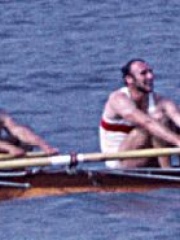
10. Gerhard Auer (1943 - 2019)
With an HPI of 57.51, Gerhard Auer is the 10th most famous Czech Athlete. His biography has been translated into 20 different languages.
Gerhard Auer (29 June 1943 – 21 September 2019) was a German rower who competed for West Germany in the 1972 Summer Olympics. Auer was born in Tepl. He competed at the 1970 World Rowing Championships in St. Catharines in the coxed four and won gold. He was a crew member of the West German boat which won the gold medal in the coxed fours event at the 1972 Summer Olympics in Munich.
People
Pantheon has 180 people classified as Czech athletes born between 1878 and 2002. Of these 180, 146 (81.11%) of them are still alive today. The most famous living Czech athletes include Jan Železný, Dominik Hašek, and František Pospíšil. The most famous deceased Czech athletes include Emil Zátopek, Dana Zátopková, and František Čapek. As of April 2024, 23 new Czech athletes have been added to Pantheon including Taťána Kocembová, Václav Chalupa, and Jiří Rohan.
Living Czech Athletes
Go to all RankingsJan Železný
1966 - Present
HPI: 61.92
Dominik Hašek
1965 - Present
HPI: 61.02
František Pospíšil
1944 - Present
HPI: 57.74
Helena Fibingerová
1949 - Present
HPI: 55.94
Hugo Simon
1942 - Present
HPI: 53.00
Roman Šebrle
1974 - Present
HPI: 52.45
Barbora Špotáková
1981 - Present
HPI: 52.41
Vladimír Růžička
1963 - Present
HPI: 49.60
Tomáš Dvořák
1972 - Present
HPI: 49.51
Jiří Malec
1962 - Present
HPI: 48.98
Milena Duchková
1952 - Present
HPI: 48.27
Taťána Kocembová
1962 - Present
HPI: 47.04
Deceased Czech Athletes
Go to all RankingsEmil Zátopek
1922 - 2000
HPI: 75.90
Dana Zátopková
1922 - 2020
HPI: 65.61
František Čapek
1914 - 2008
HPI: 59.13
Ludvík Daněk
1937 - 1998
HPI: 58.86
Olga Fikotová
1932 - 2024
HPI: 58.60
František Janda-Suk
1878 - 1955
HPI: 57.71
Gerhard Auer
1943 - 2019
HPI: 57.51
František Douda
1908 - 1990
HPI: 57.50
Karel Mejta Sr
1928 - 2015
HPI: 57.43
Jan Brzák-Felix
1912 - 1988
HPI: 57.10
Jaroslav Holík
1942 - 2015
HPI: 56.45
Jiří Skobla
1930 - 1978
HPI: 56.40
Newly Added Czech Athletes (2025)
Go to all RankingsTaťána Kocembová
1962 - Present
HPI: 47.04
Václav Chalupa
1967 - Present
HPI: 43.60
Jiří Rohan
1964 - Present
HPI: 43.27
Roman Dostál
1970 - Present
HPI: 42.31
Kateřina Holubcová
1976 - Present
HPI: 42.07
Zdeněk Vítek
1977 - Present
HPI: 41.52
Tomáš Karas
1975 - Present
HPI: 40.69
David Moravec
1973 - Present
HPI: 39.15
Ondřej Štěpánek
1979 - Present
HPI: 38.95
David Jirka
1982 - Present
HPI: 38.91
Jaroslav Volf
1979 - Present
HPI: 38.88
Jiří Beran
1982 - Present
HPI: 38.17
Overlapping Lives
Which Athletes were alive at the same time? This visualization shows the lifespans of the 25 most globally memorable Athletes since 1700.

